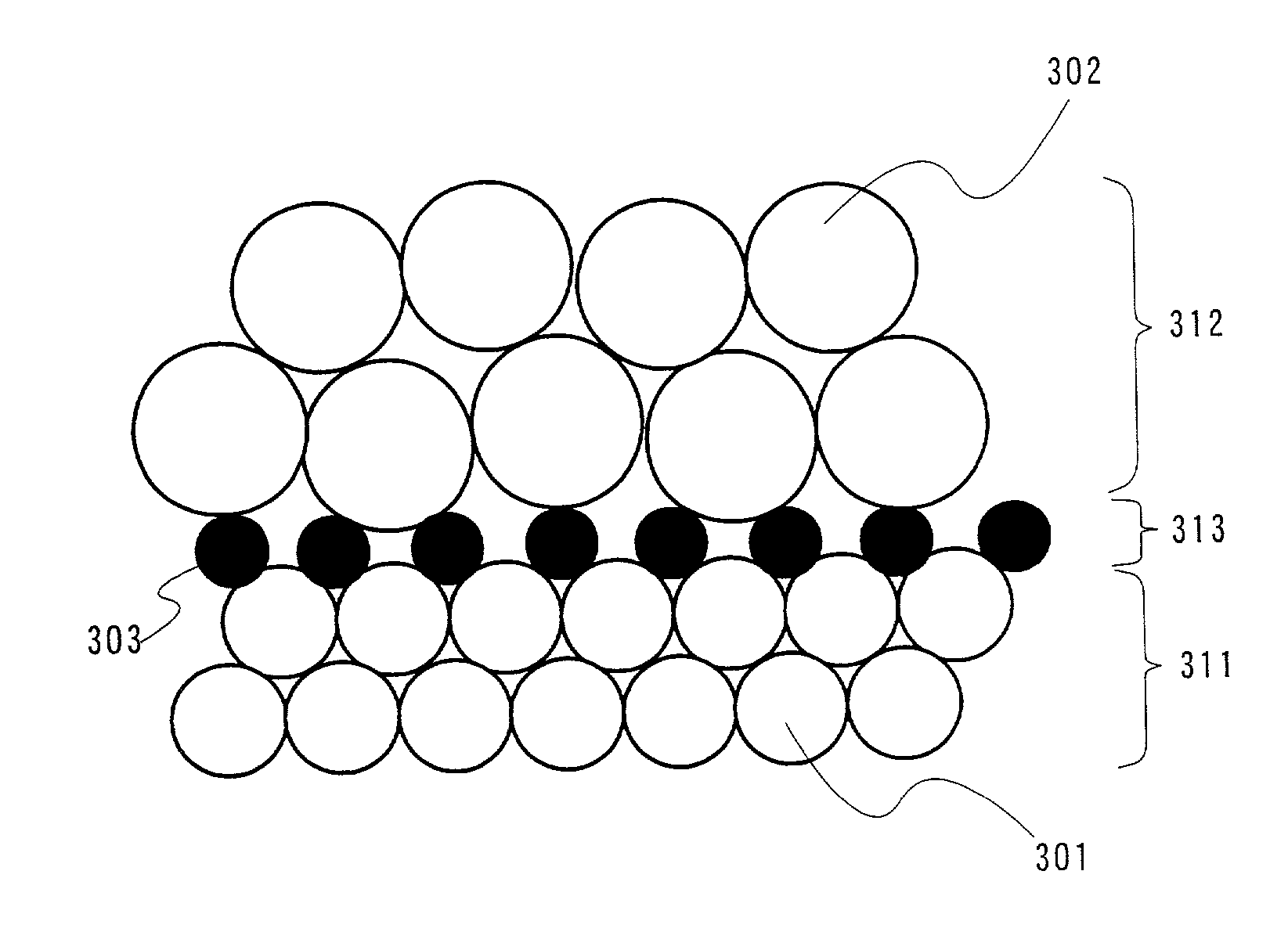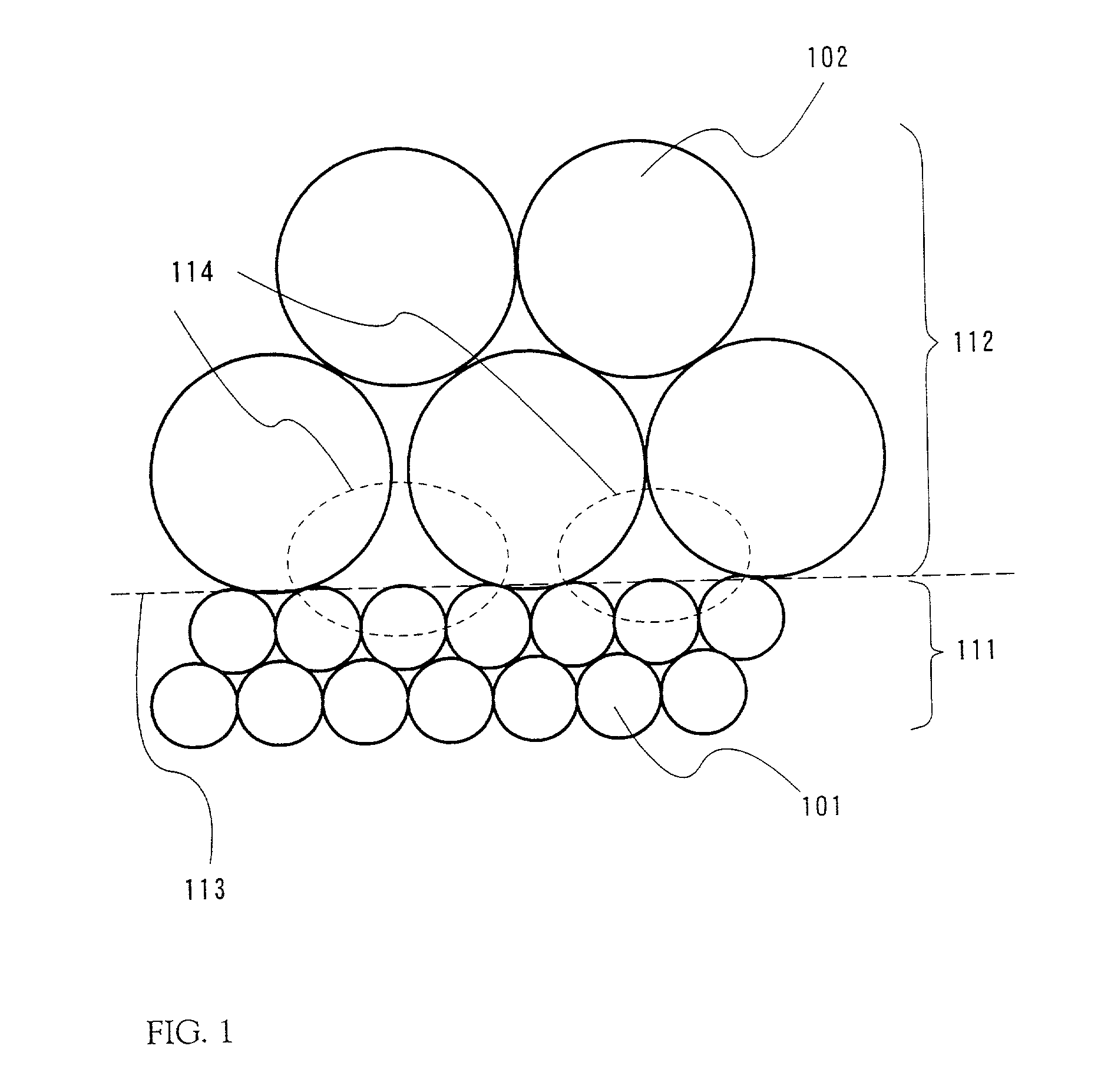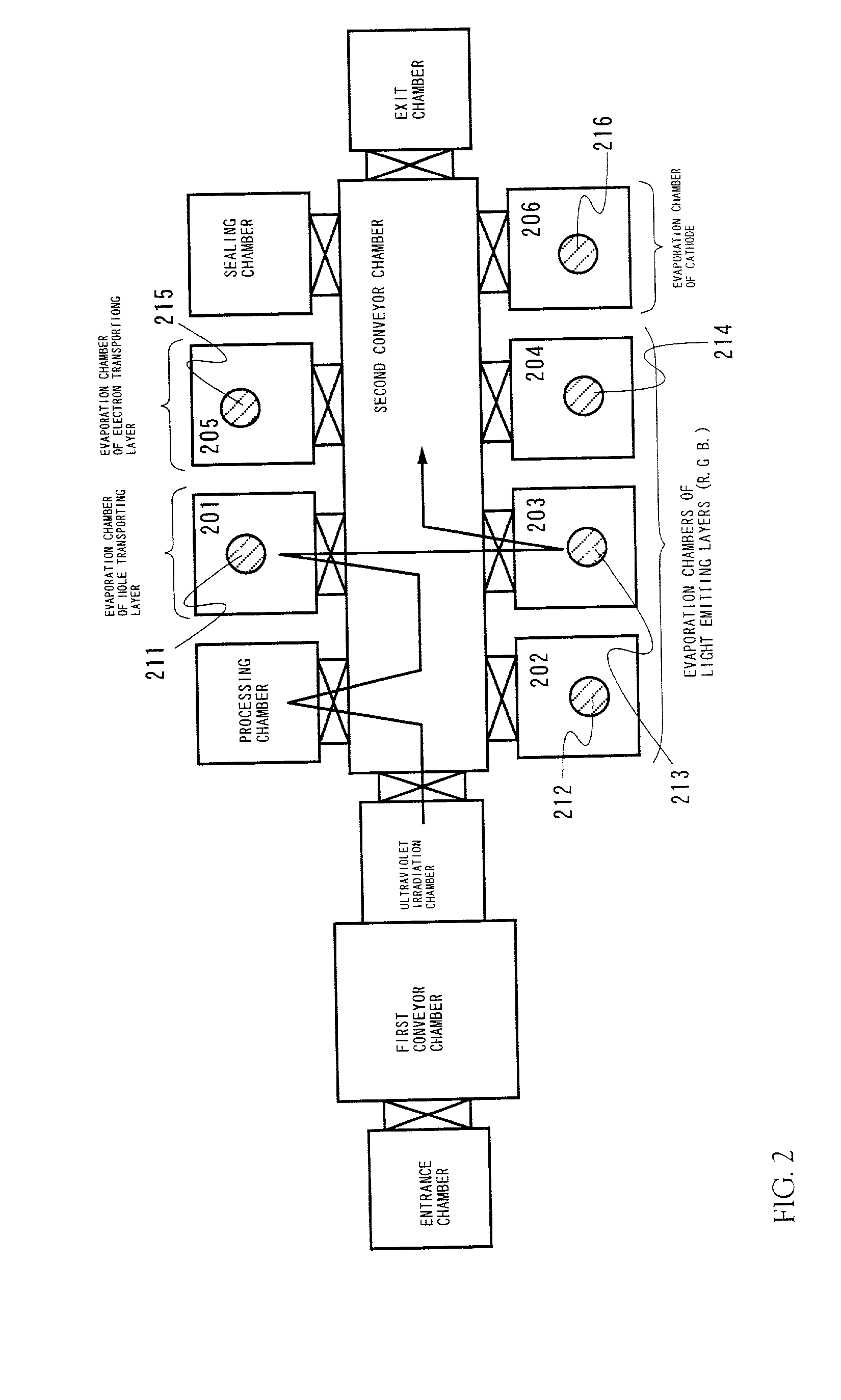Light emitting device
a technology of light emitting device and light source, which is applied in the direction of solid-state devices, electric lighting sources, electric light sources, etc., can solve the problems of affecting the efficiency of light emission, affecting the effect of driver voltage reduction, and difficult noise development,
- Summary
- Abstract
- Description
- Claims
- Application Information
AI Technical Summary
Benefits of technology
Problems solved by technology
Method used
Image
Examples
embodiments
Embodiment 1
[0119] A specific example of an organic light emitting element in which a hole injecting region made from a hole injecting material is inserted between the anode 402 and the organic compound film 403 is shown in this embodiment for the organic light emitting elements of FIG. 7A.
[0120] First, the glass substrate 401 on which a film is formed from ITO by sputtering to a thickness on the order of 100 nm and the anode 402 is formed is prepared. The glass substrate 401 having the anode 402 is then conveyed to the inside of a vacuum chamber like that shown in FIGS. 9A and 9B. Five evaporation sources are necessary in this embodiment in order to evaporate five types of materials (four of the materials are organic compounds, and one is a metal that becomes a cathode).
[0121] The hole injecting material CuPc is evaporated for 20 nm first, and when the 20 nm thickness of CuPc evaporation is completed, evaporation of the hole transporting material .alpha.-NPD at an evaporation rate ...
embodiment 2
[0126] A specific example of the organic light emitting element shown in FIG. 8B is shown in this embodiment.
[0127] First, the glass substrate 401 on which a film is formed from ITO by sputtering to a thickness on the order of 100 nm and the anode 402 is formed is prepared. The glass substrate 401 having the anode 402 is then conveyed to the inside of a vacuum chamber like that shown in FIGS. 9A and 9B. Five evaporation sources are necessary in this embodiment in order to evaporate five types of materials (four of the materials are organic compounds, and one is a metal that becomes a cathode).
[0128] After forming the hole transporting region 405 to a thickness of 30 nm only from the hole transporting material MTDATA (evaporation rate of 3 .ANG. / sec), the shutter to the MTDATA evaporation source is gradually closed, while the shutter to an evaporation source of the electron transporting material PBD is gradually opened. The first concentration change region 406 with a thickness on th...
embodiment 3
[0132] A specific example in which a hole injecting region made from a hole injecting material is inserted between the anode 402 and the organic compound film 403, an electron injecting region made from an electron injecting material is respectively inserted between the cathode 404 and the organic compound film 403, and a triplet light emitting material is applied as the light emitting material in the organic light emitting element is discussed in this embodiment. The element structure is shown in FIG. 10.
[0133] First, the glass substrate 1000 on which a film is formed from ITO by sputtering to a thickness on the order of 100 nm and the an ITO is formed is prepared. The glass substrate having the ITO is then conveyed to the inside of a vacuum chamber like that shown in FIGS. 9A and 9B. Seven evaporation sources are necessary in this embodiment in order to evaporate seven types of materials (five of the materials are organic compounds, and two are inorganic compounds that become cath...
PUM
 Login to View More
Login to View More Abstract
Description
Claims
Application Information
 Login to View More
Login to View More - R&D
- Intellectual Property
- Life Sciences
- Materials
- Tech Scout
- Unparalleled Data Quality
- Higher Quality Content
- 60% Fewer Hallucinations
Browse by: Latest US Patents, China's latest patents, Technical Efficacy Thesaurus, Application Domain, Technology Topic, Popular Technical Reports.
© 2025 PatSnap. All rights reserved.Legal|Privacy policy|Modern Slavery Act Transparency Statement|Sitemap|About US| Contact US: help@patsnap.com



